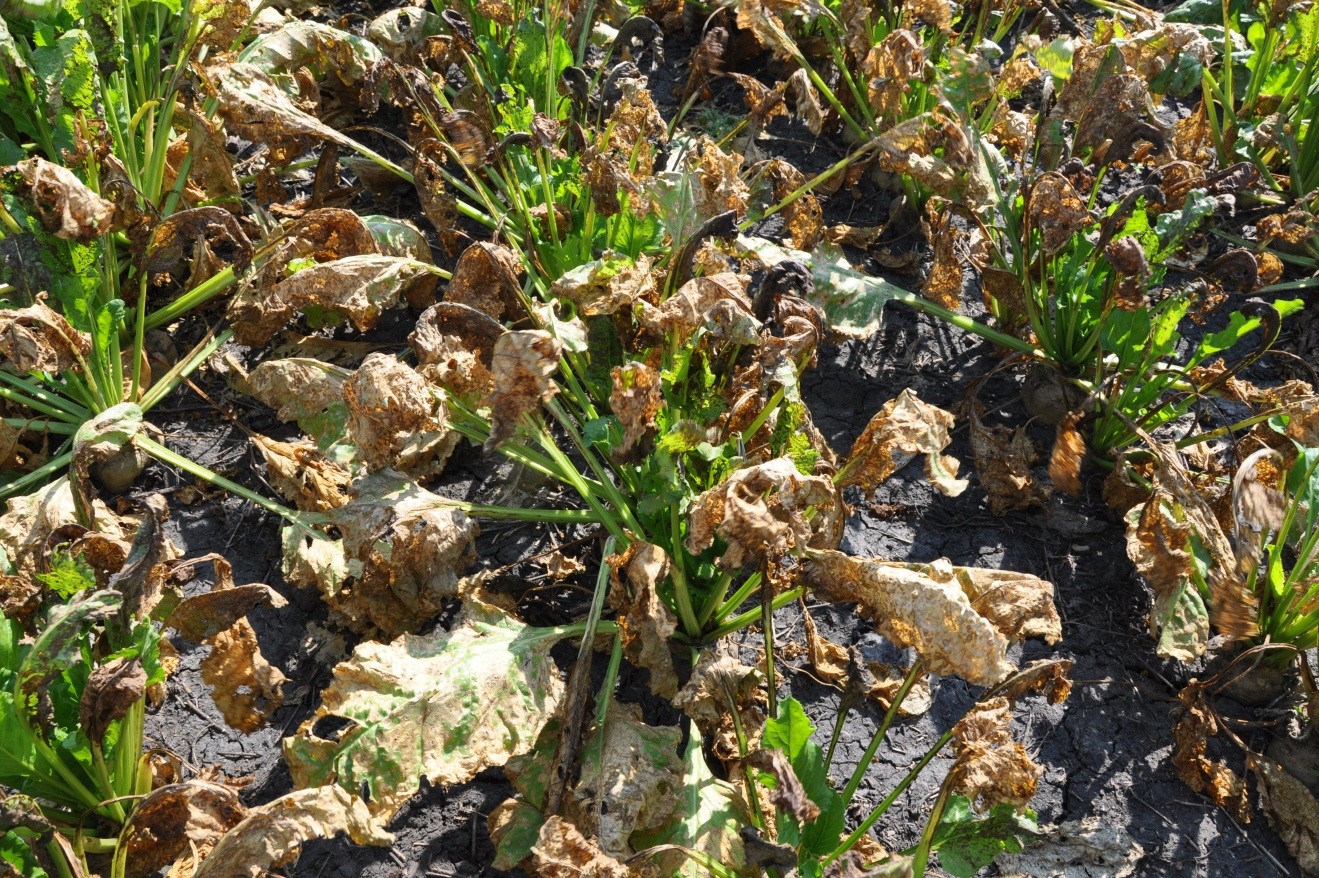2016 Sugarbeet Leaf Disease Observation
As one of the leading providers of seed treatments for sugarbeets in the United States, Germains’ Sales Team spends a substantial amount of time in the field so that they may keep a pulse on the crop conditions and performance of new varieties. The following 2016 Sugarbeet Leaf Disease Observation report provided by our Sugarbeet Sales & Marketing Manager, Kevin Bigger gives insight on the field conditions and outcomes for the 2016 season:
Sugarbeet Leaf Disease Observation
Sugar Beet harvest has finished for the 2016 growing year with varying results depending on the growing regions. Growing areas in the West and Rocky Mountain regions yielded record high tonnage and sugar percentage. The Red River Valley and Great Lakes area also had great yields, but sugar percentage ended up lower than historical averages. There are many differences between these growing regions and cultivation practices that may impact sugar percentages.

Photo courtesy of the USDA
The conditions in the Red River Valley and Great Lakes regions were conducive for leaf disease. Varietal resistance, humidity, temperature, wet leaves and disease pressure from the previous year contributed to outbreaks this season. Fungi or bacteria are often the cause of leaf disease in sugarbeet crops. Cercospora, Ramularia, Phoma, and Alternaria are all fungal leaf diseases that cause leaf spot. Bacterial leaf spot may also occur, but the economic losses tend to be less than fungal diseases. Growers need to able to differentiate between bacterial vs. fungal leaf diseases so they may act quickly and apply the correct control methods.
Common Causes of Sugarbeet Leaf Disease
Cercospora leaf spot and other fungal diseases have a negative impact on sugar percentages. The brown infected leaves trigger the plant to produce new leaves causing the plant to burn the sugar stored in the root. Lower sugar percentages will increase production costs impacting the grower’s net return. The first line of defense against leaf disease is to sugar beet varieties that are resistant to these diseases.

Managing Cercospora leaf spot| Photo by: Mohamed Khan, Extension Sugarbeet Specialist
Unlike the cultivation practices in the Western U.S., growers in the Red River Valley and Great Lakes region rely on natural rainfall to bring water for crops which are both a blessing and a curse. The Western U.S. has more ability to control the amount of water the crop receives, while the eastern regions can be affected by either too much or too little rainfall. Receiving too much moisture at the wrong time creates conditions that are conducive for leaf disease outbreaks.
Cultivation Practices for Controlling Sugarbeet Leaf Diseases
Due to controlled irrigation practices and ideal warm summer temperatures contributed to a great sugarbeet harvest for Western US growers. The processing cost per ton will be lower because of the higher sugar percentage year resulting in a higher beet payment. Proper management Crop such as; crop rotations of at least three years allows for the decay and destruction of infected crop and a minimum 300 ft separation of next year’s fields from infected fields can help.
More importantly, planting varieties resistant to leaf disease is probably one of the most important decisions a grower can make. Multiple varieties with different genetics should be planted to help reduce exposure for varieties that are susceptible to foliar disease. Further, a good fungicide program will lessen then destructive effects of leaf disease.
The low sugar percentages some areas experienced in 2016 will give growers the opportunity to change cultural practices to improve their crop in the 2017 growing season. Adapting cultivation practices will help sugar companies remain profitable in the future and ensure the success of their growers.
